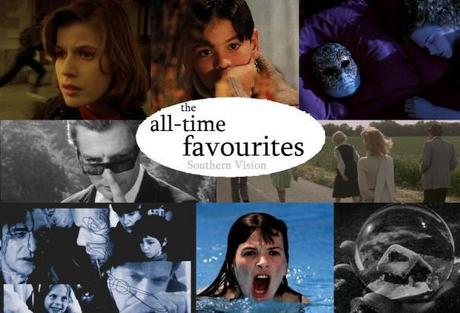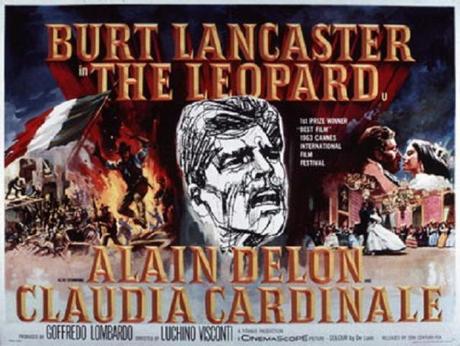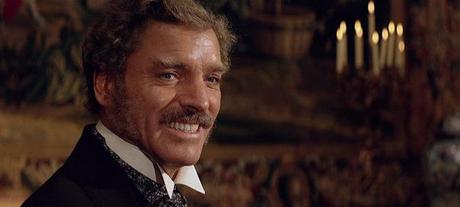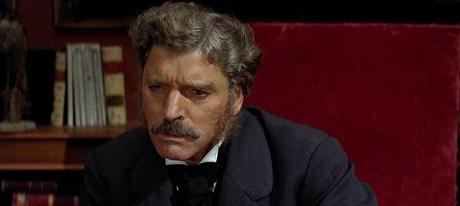
Welcome to the All-Time Favourites Series. This series examines 25 of the greatest films I’ve ever seen, looking at them in depth with analyses of what makes them great, and cutting down to the most basic level, looking at plot, cinematography, writing, direction, acting and other things, to see what makes these great films tick. For more info on the series, click here. This week’s film is Luchino Visconti’s masterpiece The Leopard.

I say this with absolute certainty, clarity and definition: very few films have ever been as beautiful and incredible in the ways that Luchino Visconti’s The Leopard is, and I highly doubt any film will be again. Here is a film that moves at its own pace; gradually, slowly. It allows its characters time to think and muse on their situation in the changing world, and it allows their choices to have consequences. This is a film that understands the way and manner of humanity that defines us: our emotions and beliefs, and our passions.
Its anchor is a performance by Burt Lancaster, speaking flawless Italian, that is every bit as great as Marlon Brando in The Godfather or Orson Welles in Citizen Kane, but, in its subtlety and quietness, something greater than either. Lancaster’s rich smile, his deep frown, his inimitible expression of concentration and strong thought, is so meaningful yet indecipherable that it charges the screen with a burst of electric energy few actors have ever been capable of. Prior to my viewing of The Leopard, I thought little of Lancaster. But now, seeing all he is capable of when under the steady eye of a great director, I view his performance as timeless, and hold him in high regard.

But equally as powerful, graceful and effective as the actor is the director. Luchino Visconti, whose other credits include Le Notti Bianche, Rocco and His Brothers and Death in Venice, is known for his sweeping epics and his shorter, subtler tales of luscious, visceral passion. The Leopard is a career-best, exemplifying all his talents and showcasing them gracefully for the world to see. Originally 205 minutes, Visconti cut twenty minutes from the film to leave the definitive 185 minute version (though a terrible English-dubbed 160 minute version also exists), and in its 185 minutes, we see such incredible images of beauty and transcendence, that no other filmmaker could hope to film anything greater; even Fellini, the other Italian who was stealing the stage from Visconti at the time, never created anything as ferociously powerful as this.
The film is the story of an empire that must adapt to the changing times or die. This empire, of wonder and fascination, is glorious in the eyes of Prince Fabrizio Salina (Lancaster), who admires it and all it has created. However, Salina being a wise man, realizes that change is imminent, and that the empire he has grown so fond and protective of, must be passed onto the new generation. Conscious of his own distant but inevitable mortality, Salina decides to begin the passing on of his world to the new life by setting up a marriage between his nephew, Tancredi (Alain Delon) and Angelica (Claudia Cardinale), the daughter of a mayor. The two absolutely adore each other, and the marriage was inevitable; glimpsing their happiness, Salina knows it is the time for them.

This leads to the film’s phenomenal final sequence, a 45-minute ballroom dance that occupies almost the entire final third of the film, and is one of the most visually breathtaking images ever committed to celluloid. As a ballroom sequence it is magnificent and rivalled only by the sequence that concludes Aleksandr Sokurov’s Russian Ark, a film that borrows from The Leopard in more ways than one. This sequence alone is staggering to watch and paved the way for similar beautiful images of nature and grace in subsequent films. None of the films that borrowed from The Leopard were as huge an event and as spectacular an achievement as Visconti’s film however, a Palme D’Or winner at Cannes.
All in all, in its three hours, The Leopard achieves more for Visconti than most directors could hope for from their whole career. I have seen films of raw, passionate, visceral beauty, such as Fanny and Alexander, Apocalypse Now and Three Colours: Blue. But none of these have been anything like The Leopard, which showcases fantastically Visconti’s attention to detail and pureness. Its casual beauty is admirable and enviable, and its ability to properly and convincingly capture its era in complete perfection and utter refinement is simply perfection. Reflecting on The Leopard, I find no flaws. No moments of stumbling or brief wandering. I simply see a series of ridiculously professional, powerfully beautiful set pieces carefully scattered amongst a painstakingly created realm of paradise. The Leopard is one of those films wherein it is possible to simply lose yourself and fall into the flow of its powerful circular motion, in which life continues moving at its own leisurely pace, unobstructed and in blissful freedom.


